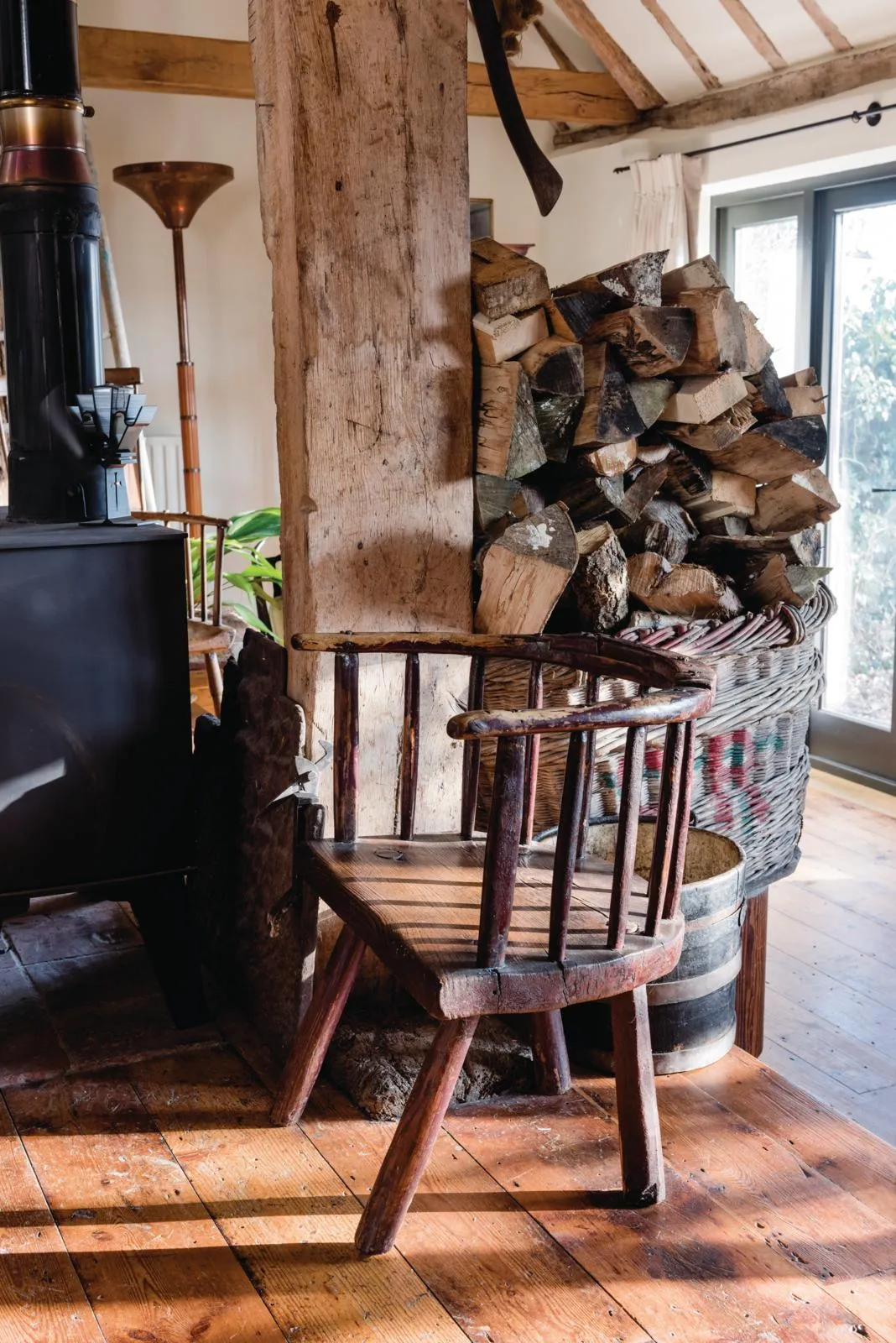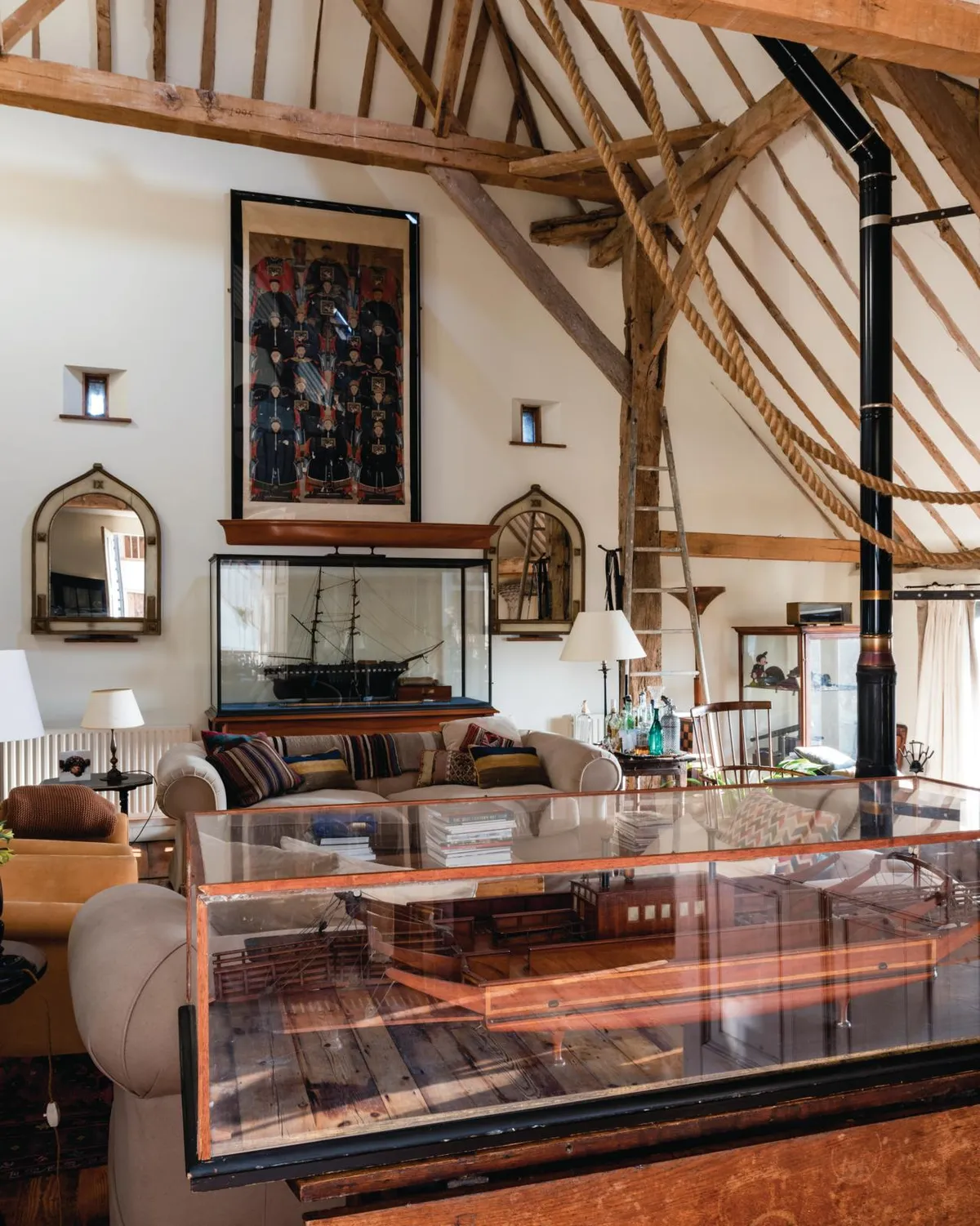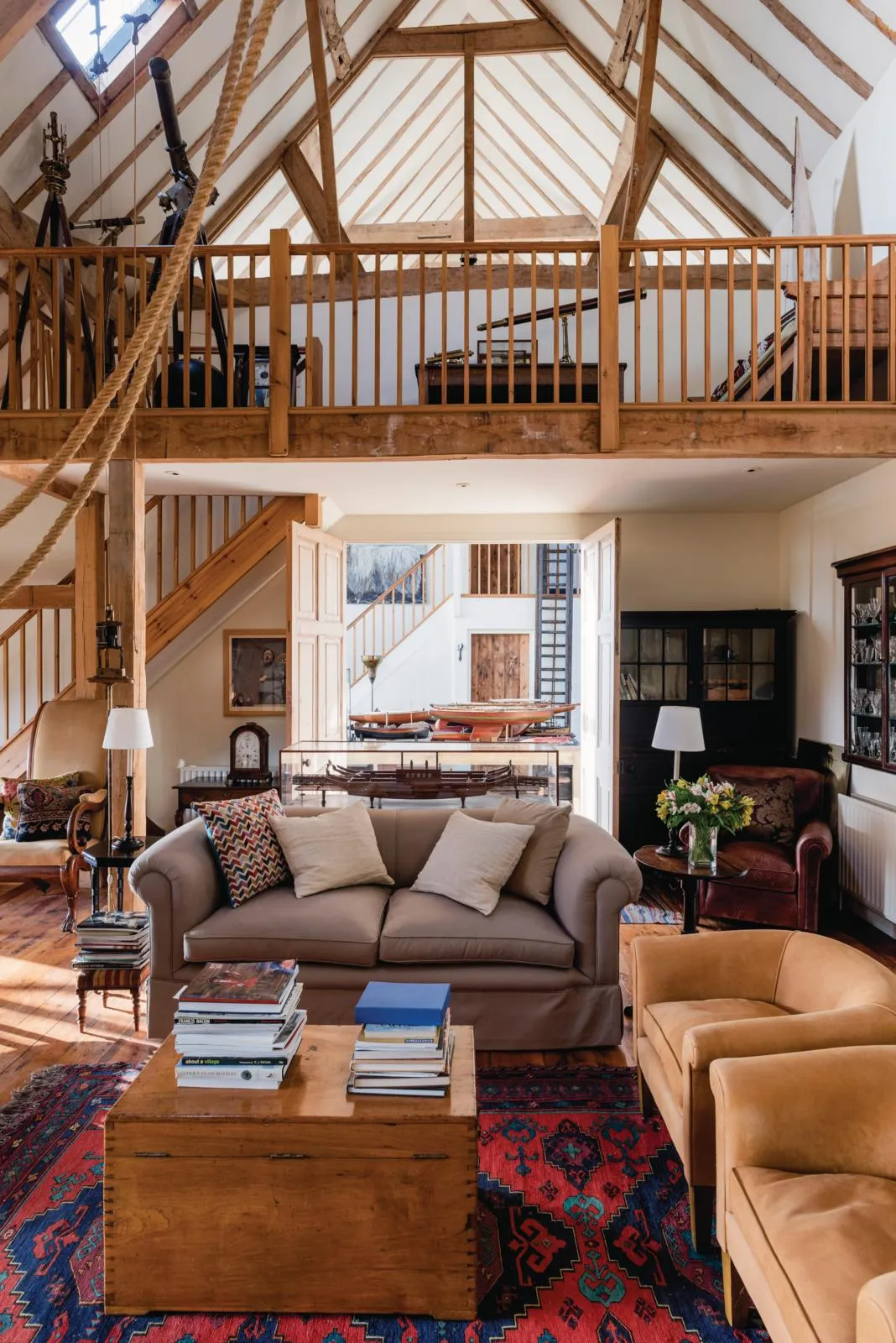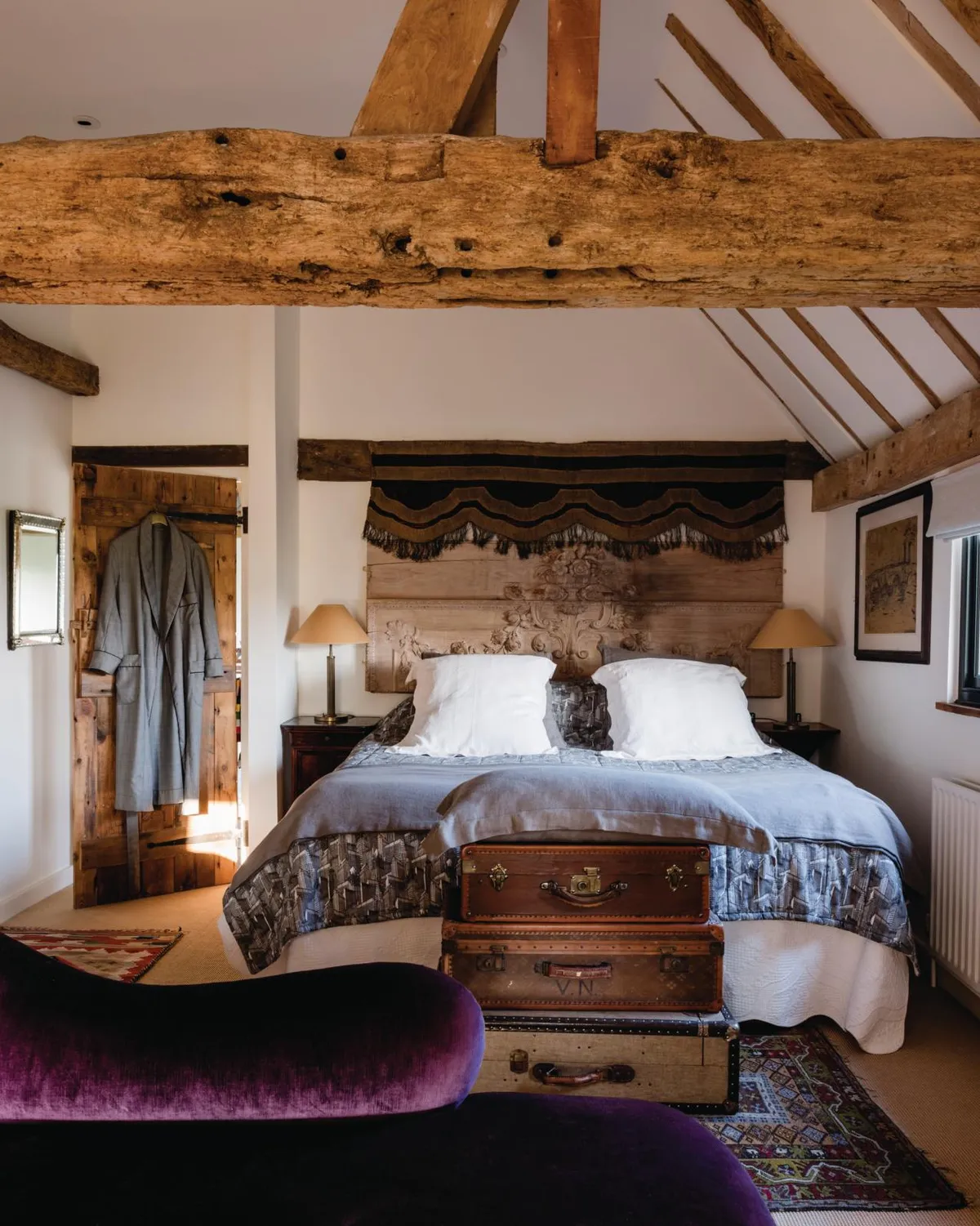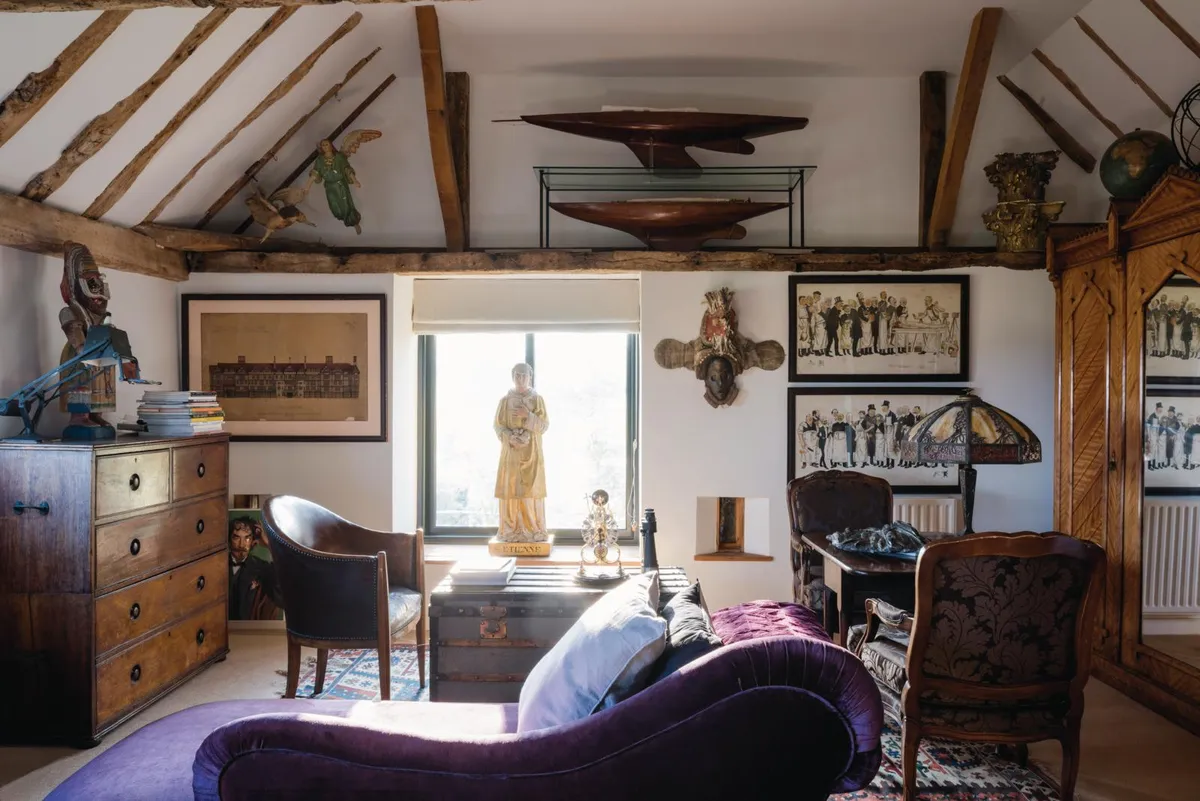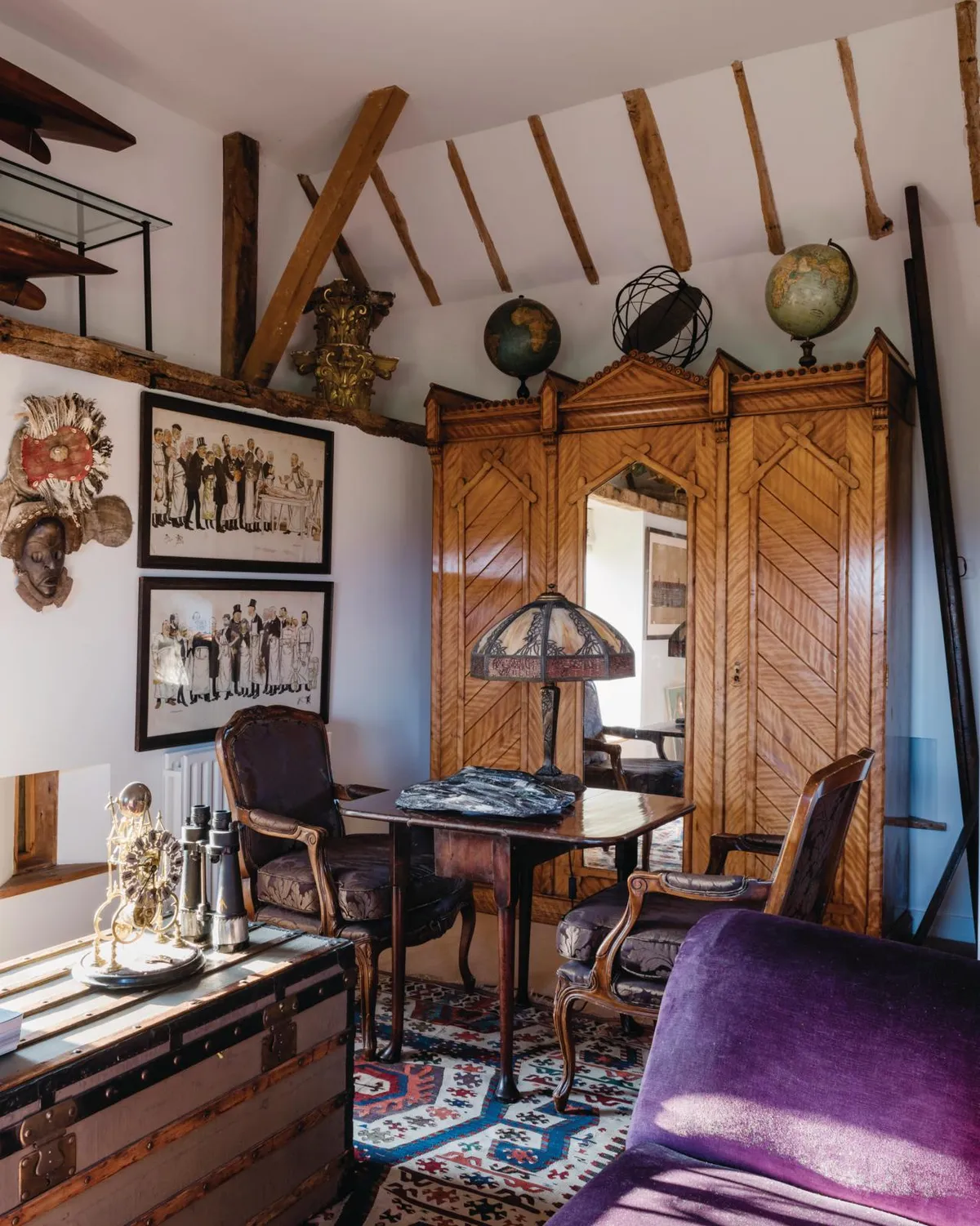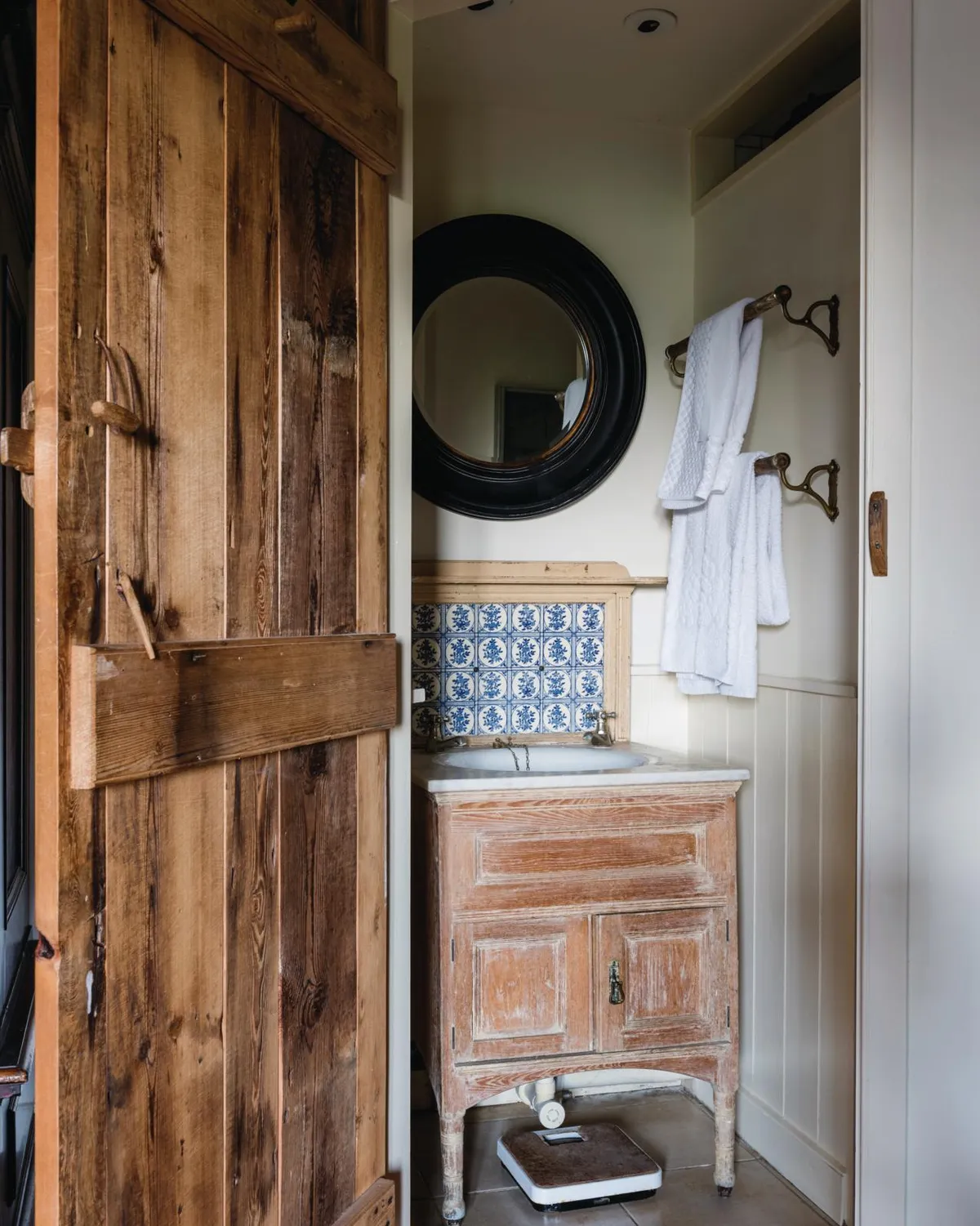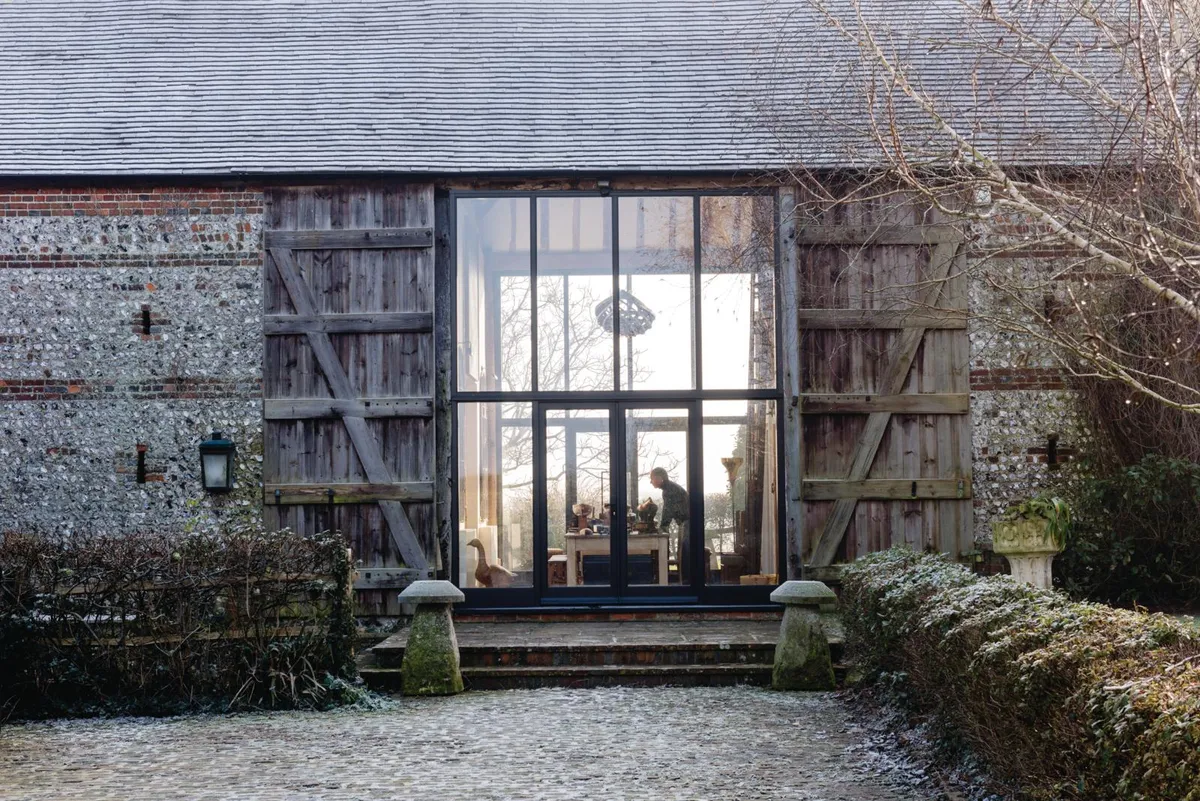The most striking thing about Bill Broadbent’s late 18th-century Sussex barn is that it looks like a barn – a surprisingly rare phenomenon for most modern barn conversions. Bill, a property developer specialising in historic buildings and hotels, has spent his life living in ancient buildings. In fact, he was born in the famous Prospect of Whitby in Wapping, London, a centuries-old Thameside pub, and grew up surrounded by an awareness of architecture and antiques – an interest that was encouraged by his grandfather, who loved clocks and lived in a fine old house on Kingston Hill in London.
‘I bought the barn 24 years ago as a weekend home,’ says Bill. ‘It had outline planning permission, a dodgy cement-tile roof, dirt floors and a collapsing shed where the kitchen is now.’ Needless to say, an awful lot of work was done to give the appearance that the imposing flint, brick and oak structure had survived wholly intact. The roof was replaced, a massive concrete slab was poured as underpinning to steady the barn, beams were repaired or replaced, and the unsalvageable timber doors were copied to form giant shutters for what are now large expanses of glazing where carts would have once entered.
One step into the impressive hall and it is clear the interior has been treated to the same exacting standards as the exterior. ‘I decided not to employ an architect and to sketch my own vision of how the space would work best,’ says Bill, ‘retaining as much of the grand scale of the barn as possible, while not scrimping on cosy bedrooms.’ The spaces range from cottagey to monumental with a practical, painted wood kitchen created in a tumbledown shed.
Bill took the time and trouble to obtain as many reclaimed materials as he needed to give his home a credible authenticity, such as finding Georgian pine floorboards from a demolition in Brighton, as well as reclaimed brewery roof tiles. He even laid 20,000 400-year-old cobbles from the lane entrance to the front door. The daunting task of filling the house with interesting furniture and objects was surprisingly easy, as the barn is a fitting setting for Bill’s mixture of unusual antiques.
Having been a collector since his early teens and after downsizing his London home, Bill had plenty to choose from, spanning old museum cabinets, 19th and 20th-century model yacht and boat hulls, Georgian glasses and decanters, masses of scientific instruments (from telescopes to steam engine pressure gauges), primitive stick chairs, rugs, pictures, textiles, fishing rods, a stuffed owl and even a gunpowder bucket. Bill has amassed items for over 40 years, buying at auctions and while travelling. ‘I found that pair of Soumak rugs in the Ukraine,’ he says. He also buys from dealers who know his interests and contact him when they see something he’d find irresistible.
It is not only the living spaces that are carefully curated; the bedrooms are equally furnished with intriguing and diverse antiques, from a giant German armoire and velvet chaise longue to old lamps, prints and carved figures. The only trouble with having a passion for collecting is that, while there are plenty of tables, there is nowhere to eat as they are piled with Bill’s ‘toys’.
The fact that the building is unusually light is down to some very clever design. As well as both sides of the original central cart entrance being filled with glass, the space above the small sitting room-cum-study gallery overlooking the entrance hall was fitted with windows too. There is a roof light, while the original wind slips that allowed the east/west airflow to dry hay have been glazed. The kitchen, which faces the entrance driveway, is lit by windows and glass doors along its length and the master bedroom is dual-aspect, providing wonderful countryside views.
The more you look at this special country home, the more you notice Bill’s connoisseur eye for detail. The ironwork on the plank doors is copied from an old pattern, the locks have leather latches, and the thick hanging ropes, intended to be used as an exercise aid, look exactly right among the old ships’ beams used in the barn’s original construction. The beautifully crafted wooden frame of a canoe floating high in the hall roof space is another example of Bill’s ability to allow form and craftsmanship to be seen as art. ‘I love this house,’ says Bill. ‘It’s the perfect place for the things I like to live with.’



